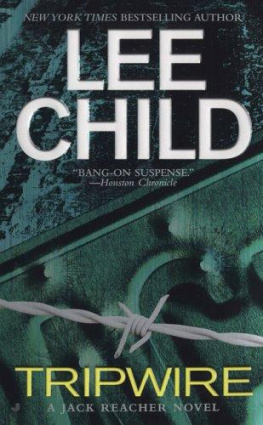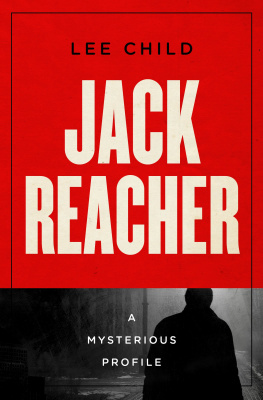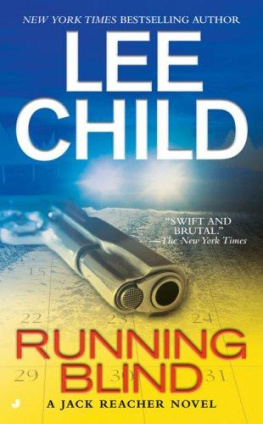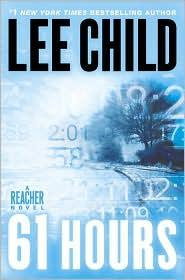Lee Child - Gone Tomorrow (Jack Reacher #13)
Here you can read online Lee Child - Gone Tomorrow (Jack Reacher #13) full text of the book (entire story) in english for free. Download pdf and epub, get meaning, cover and reviews about this ebook. year: 2010, publisher: Dell, genre: Detective and thriller. Description of the work, (preface) as well as reviews are available. Best literature library LitArk.com created for fans of good reading and offers a wide selection of genres:
Romance novel
Science fiction
Adventure
Detective
Science
History
Home and family
Prose
Art
Politics
Computer
Non-fiction
Religion
Business
Children
Humor
Choose a favorite category and find really read worthwhile books. Enjoy immersion in the world of imagination, feel the emotions of the characters or learn something new for yourself, make an fascinating discovery.

- Book:Gone Tomorrow (Jack Reacher #13)
- Author:
- Publisher:Dell
- Genre:
- Year:2010
- Rating:3 / 5
- Favourites:Add to favourites
- Your mark:
- 60
- 1
- 2
- 3
- 4
- 5
Gone Tomorrow (Jack Reacher #13): summary, description and annotation
We offer to read an annotation, description, summary or preface (depends on what the author of the book "Gone Tomorrow (Jack Reacher #13)" wrote himself). If you haven't found the necessary information about the book — write in the comments, we will try to find it.
Gone Tomorrow (Jack Reacher #13) — read online for free the complete book (whole text) full work
Below is the text of the book, divided by pages. System saving the place of the last page read, allows you to conveniently read the book "Gone Tomorrow (Jack Reacher #13)" online for free, without having to search again every time where you left off. Put a bookmark, and you can go to the page where you finished reading at any time.
Font size:
Interval:
Bookmark:

ALSO BY LEE CHILD
KILLING FLOOR
DIE TRYING
TRIPWIRE
RUNNING BLIND
ECHO BURNING
WITHOUT FAIL
PERSUADER
THE ENEMY
ONE SHOT
THE HARD WAY
BAD LUCK AND TROUBLE
NOTHING TO LOSE

For my sisters-in-law, Leslie and Sally,
two women of rare charm and quality
Suicide bombers are easy to spot. They give out all kinds of telltale signs. Mostly because theyre nervous. By definition theyre all first-timers.
Israeli counterintelligence wrote the defensive playbook. They told us what to look for. They used pragmatic observation and psychological insight and came up with a list of behavioral indicators. I learned the list from an Israeli army captain twenty years ago. He swore by it. Therefore I swore by it too, because at the time I was on three weeks detached duty mostly about a yard from his shoulder, in Israel itself, in Jerusalem, on the West Bank, in Lebanon, sometimes in Syria, sometimes in Jordan, on buses, in stores, on crowded sidewalks. I kept my eyes moving and my mind running free down the bullet points.
Twenty years later I still know the list. And my eyes still move. Pure habit. From another bunch of guys I learned another mantra: Look, dont see, listen, dont hear. The more you engage, the longer you survive.
The list is twelve points long if youre looking at a male suspect. Eleven, if youre looking at a woman. The difference is a fresh shave. Male bombers take off their beards. It helps them blend in. Makes them less suspicious. The result is paler skin on the lower half of the face. No recent exposure to the sun.
But I wasnt interested in shaves.
I was working on the eleven-point list.
I was looking at a woman.
I was riding the subway, in New York City. The 6 train, the Lexington Avenue local, heading uptown, two oclock in the morning. I had gotten on at Bleecker Street from the south end of the platform into a car that was empty except for five people. Subway cars feel small and intimate when theyre full. When theyre empty they feel vast and cavernous and lonely. At night their lights feel hotter and brighter, even though theyre the same lights they use in the day. Theyre all the lights there are. I was sprawled on a two-person bench north of the end doors on the track side of the car. The other five passengers were all south of me on the long bench seats, in profile, side on, far from each other, staring blankly across the width of the car, three on the left and two on the right.
The cars number was 7622. I once rode eight stops on the 6 train next to a crazy person who talked about the car we were in with the same kind of enthusiasm that most men reserve for sports or women. Therefore I knew that car number 7622 was an R142A model, the newest on the New York system, built by Kawasaki in Kobe, Japan, shipped over, trucked to the 207th Street yards, craned onto the tracks, towed down to 180th Street and tested. I knew it could run two hundred thousand miles without major attention. I knew its automated announcement system gave instructions in a mans voice and information in a womans, which was claimed to be a coincidence but was really because the transportation chiefs believed such a division of labor was psychologically compelling. I knew the voices came from Bloomberg TV, but years before Mike became mayor. I knew there were six hundred R142As on the tracks and that each one was a fraction over fifty-one feet long and a little more than eight feet wide. I knew that the no-cab unit like we had been in then and I was in now had been designed to carry a maximum of forty people seated and up to 148 standing. The crazy person had been clear on all that data. I could see for myself that the cars seats were blue plastic, the same shade as a late summer sky or a British Air Force uniform. I could see that its wall panels were molded from graffiti-resistant fiberglass. I could see its twin strips of advertisements running away from me where the wall panels met the roof. I could see small cheerful posters touting television shows and language instruction and easy college degrees and major earning opportunities.
I could see a police notice advising me: If you see something, say something.
The nearest passenger to me was a Hispanic woman. She was across the car from me, on my left, forward of the first set of doors, all alone on a bench built for eight, well off center. She was small, somewhere between thirty and fifty, and she looked very hot and very tired. She had a well-worn supermarket bag looped over her wrist and she was staring across at the empty place opposite with eyes too weary to be seeing much.
Next up was a man on the other side, maybe four feet farther down the car. He was all alone on his own eight-person bench. He could have been from the Balkans, or the Black Sea. Dark hair, lined skin. He was sinewy, worn down by work and weather. He had his feet planted and he was leaning forward with his elbows on his knees. Not asleep, but close to it. Suspended animation, marking time, rocking with the movements of the train. He was about fifty, dressed in clothes far too young for him. Baggy jeans that reached only his calves, and an oversized NBA shirt with a players name on it that I didnt recognize.
Third up was a woman who might have been West African. She was on the left, south of the center doors. Tired, inert, her black skin made dusty and gray by fatigue and the lights. She was wearing a colorful batik dress with a matching square of cloth tied over her hair. Her eyes were closed. I know New York reasonably well. I call myself a citizen of the world and New York the capital of the world, so I can make sense of the city the same way a Brit knows London or a Frenchman knows Paris. Im familiar but not intimate with its habits. But it was an easy guess that any three people like these already seated on a late-night northbound 6 train south of Bleecker were office cleaners heading home from evening shifts around City Hall, or restaurant service workers from Chinatown or Little Italy. They were probably set for Hunts Point in the Bronx, or maybe all the way up to Pelham Bay, ready for short fitful sleeps before more long days.
The fourth and the fifth passengers were different.
The fifth was a man. He was maybe my age, wedged at forty-five degrees on the two-person bench diagonally opposite me, all the way across and down the length of the car. He was dressed casually but not cheaply. Chinos, and a golf shirt. He was awake. His eyes were fixed somewhere in front of him. Their focus changed and narrowed constantly, like he was alert and speculating. They reminded me of a ballplayers eyes. They had a certain canny, calculating shrewdness in them.
But it was passenger number four that I was looking at.
If you see something, say something.
She was seated on the right side of the car, all alone on the farther eight-person bench, across from and about halfway between the exhausted West African woman and the guy with the ballplayers eyes. She was white and probably in her forties. She was plain. She had black hair, neatly but unstylishly cut and too uniformly dark to be natural. She was dressed all in black. I could see her fairly well. The guy nearest to me on the right was still sitting forward and the V-shaped void between his bent back and the wall of the car made my line of sight uninterrupted except for a forest of stainless-steel grab bars.
Font size:
Interval:
Bookmark:
Similar books «Gone Tomorrow (Jack Reacher #13)»
Look at similar books to Gone Tomorrow (Jack Reacher #13). We have selected literature similar in name and meaning in the hope of providing readers with more options to find new, interesting, not yet read works.
Discussion, reviews of the book Gone Tomorrow (Jack Reacher #13) and just readers' own opinions. Leave your comments, write what you think about the work, its meaning or the main characters. Specify what exactly you liked and what you didn't like, and why you think so.














